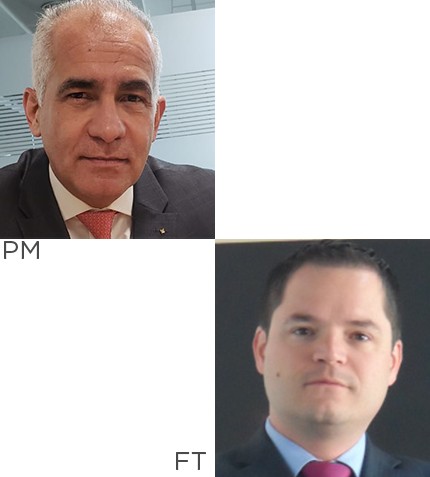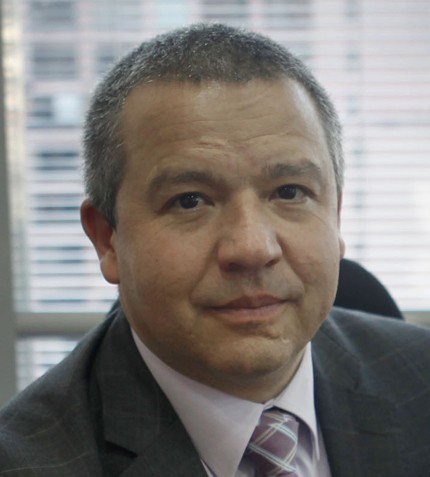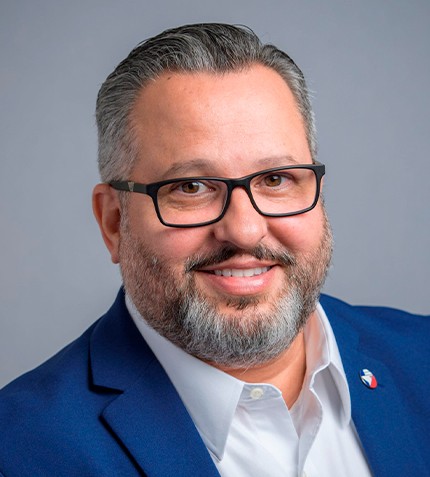
“We have a renewable energy program that will allow us to increase self-generation across the Ecopetrol group and even sell to the grid, with a total of 300 MW built in two years.”
Pedro Manrique & Felipe Trujillo
VP COMMERCIAL AND MARKETING & MANAGER PRODUCTS AND PETROCHEMICALS, ECOPETROL
Could you provide an overview of Ecopetrol’s petrochemical footprint?
PM: Ecopetrol is a vertically integrated group 88%-owned by the Colombian state. Upstream is our largest business, but we also have 12,000 kilometers of pipelines in the midstream sector, and two large refineries: Barrancabermeja, with a processing capacity of 250,000 barrels per day (bopd), and Cartagena (160,000 bopd). Being integrated is a great advantage to our petrochemicals business: we produce 800 million cubic feet per day of gas (cfpd), including ethane-rich petrochemical gas. We have two petrochemical plants in the Barrancabermeja complex, and in Cartagena we produce liquids. Since two years ago, we also have a trading business in petrochemicals, and there are strong opportunities for growth in Colombia and Latin America.
FT: Our BTX plant (covering benzene, toluene, xylene, ortho-xylene, lubricant bases, paraffins and propylene) is in Barrancabermeja. In aromatics, Ecopetrol meets 100% of the xylene and toluene demand in both Colombia and Ecuador. In aliphatic solvents, mainly white spirit, we supply 100% of Colombia’s demand and 50% of Ecuador’s consumption, while we are growing our presence in aromatics in Peru, Brazil and the Caribbean islands. We also have a small low-density polyethylene (PE) plant with a capacity of 60,000 mt/y, while we now import high-density polyethylene, as well as some polypropylene with different qualities than the one produced by our subsidiary Esenttia.
In propylene, we meet 30% of Esenttia’s needs. We also have the paraffins and lubricant bases – we produce Group 1 bases and we have started importing Group 2 bases for vehicles with newer technologies.
In Cartagena, we have three main lines: first, propylene for Esenttia, where we feed 30% of their needs. Second, we produce sulphur, as a result of Ecopetrol’s improved fuel standards. Up until three years ago, Colombia imported sulphur, today we meet 100% of the country’s demand and we have a surplus for export. Then, in Cartagena we produce 1 million mt/y of coke, a new by-product following the site’s modernization, for which we have a 10-year off-take agreement.
Finally, we have the asphalt business. Ecopetrol made a significant investment to expand capacity to 60,000 mt/month. As local demand did not reach that level, we developed the export market, but now road infrastructure is planned to be one of the key elements of economic recovery in Colombia. Currently the local market takes around 40,000 mt/m.
How was 2019 for Ecopetrol, and how has the group adapted to the pandemic in 2020?
PM: In 2019 the Ecopetrol group had record financial results. In petrochemicals in particular, lower oil prices caused a decrease in total values, but the year was very important for us to consolidate our trading business. With the pandemic, we reduced capital investments to the minimum. From a commercial standpoint, we went out to capture all the opportunities created by the market’s contango situations for our trading business. Beyond this, Ecopetrol has implemented several transformation programs in past year to increase efficiencies, and this has allowed us to obtain outstanding results if compared with the rest of the industry.
Could you outline Ecopetrol’s efforts in sustainability and social development?
PM: We have a TESG vision (Technology, Environmental, Social and Governance). Just on the commercial area, we have invested US$25 million in digitalization. Besides, we have a renewable energy program that will allow us to increase self-generation across the Ecopetrol group and even sell to the grid, with a total of 300 MW built in two years. This includes solar plants, and we also have biomass generation with sugarcane bagasse.
Ecopetrol wants to become the leader in reducing greenhouse gas emissions in Colombia and we have planned to decrease our total emissions by 20% by 2030. Ecopetrol also joined a World Bank initiative that seeks to eliminate routine gas flaring in oil and gas fields by 2030 at the latest.
Finally, there is the social aspect. Our objective is to have the social license to operate wherever we have a presence, which is in 400 of Colombia’s 1,100 municipalities. We develop social programs around road and community infrastructure, sports, health and education. With the pandemic, Ecopetrol has delivered aid packages including resources for emergency care, which will reach more than 450,000 beneficiaries.











